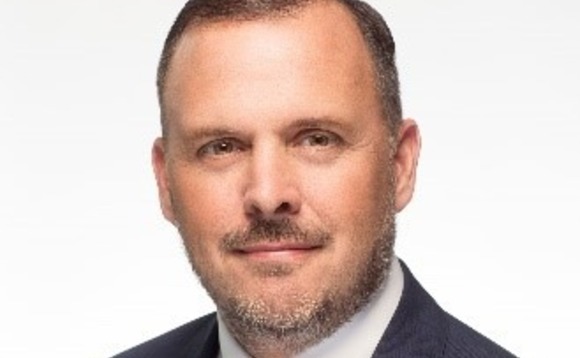
Q&A: British Columbia Investment's Jim Pittman

Jim Pittman, global head of private equity at British Columbia Investment Management, discusses the mechanics of building a co-investment heavy portfolio from Canada’s 12th largest urban center
British Columbia Investment Management Corporation (BCI) had C$171.3 billion ($132 billion) in assets under management as of March 2020. Private markets – which includes private equity, infrastructure, renewable resources, mortgages, and real estate – accounted for nearly 40% of the overall program, or C$68.2 billion. Private equity exposure was C$17.9 billion.
Q: You joined BCI from PSP Investments in 2016 as the pension plan was looking to internalize management of more assets. What was the thinking behind this?
A: The company had done well in terms of selecting fund managers and doing certain co-investments. However, given the size of BCI and the expectation that it would grow from C$130-140 billion to C$200 billion, if you've got a 30-40% allocation to private equity then you need to do larger co-investments or direct deals. We started in 2015 with seven people and we've been adding 9-12 every year. Now the private equity team is just over 40 people and the direct deals team within that is around 25. We're based in Victoria, a small city far from the major financial districts, and it's hard to get good people to move here. The only thing we could do was announce one or two large deals, so they would take us more seriously. In mid-2016 we did Pilot Freight Services, a logistics business, that was a 50-50 deal with ATL Partners. Suddenly, we got a few more calls from people about working here. Then we bought control of Hayfin Capital Management, a direct lending outfit in the UK, and even more people started to get interested. These were not syndicated deals; we co-led the first and were the only investor in the second.
Q: What has happened since then?
A: We've done 15 direct deals. In two cases, we have control. In most of the others, we have 50% covenants or at least 30% ownership and governance befitting a stake of that size. When I first came here, 18% of deals by value were co-investments. Now it's 38%. Our program is north of C$16.5 billion, including almost C$6 billion is in these large direct deals.
Q: Are there certain types of assets you are particularly interested in?
A: We are interested in low risk and longer holding periods. There is often less leverage embedded in the deal, which gives us flexibility. We tend to buy companies that are acquisitive as part of their core thesis; they aren't carrying more than 50% debt, so it's organic growth or nothing. We are not trying to get 28% IRRs. If you buy something and flip it in three years, with moderately high leverage, you will likely get an IRR above 20%. That's more to the benefit of private equity funds than pension funds. Hold it for two years more, growing at a reasonable clip, and a lot of value might be generated, but the IRR will drop below 20% unless you do something unbelievably well. Private equity firms don't want to show that kind of IRR when they are about to launch a new fund. They might also want to return some money to LPs ahead of raising the new fund.
Q: Does this mean you are a potential exit route for portfolio GPs that want to exit after three years?
A: In a couple of instances, we have bought positions from our GPs. We have sector teams that track companies and some of them are owned by our GPs or GPs we have worked with in the past. At the same time, there is a series of companies – mainly in the US – that continue to be flipped between GPs. Those types of assets often suit us. Increasingly, we find managers that want an interim realization to show value even if they are happy to hold certain assets for longer. They might sell half or even majority control to another private equity firm. As a pension plan that knows a lot of GPs, when assets are coming to market, we could intercept them.
Q: How many GP relationships do you have and how does this desire for co-investment influence manager selection?
A: We have 40-50 GP relationships and plan on staying in that range. We stratify managers in two ways: extremely high performers that have proved their ability over 10-plus years, three-plus funds, with IRRs north of 25%; and mid-market or larger GPs that need capital in addition to what goes into the fund to do bigger deals. These are strategic relationships. We think their performance will be good, but we also want to co-invest alongside them. We will always be in the middle of the pack in terms of the size of fund investments. We have been as low as $50-75 million but done co-investments that are $150 million-plus. Those GPs tend to be spin-outs or groups that were $1 billion fund size and are going towards $2 billion. Co-investments are typically $100-500 million per deal. Sometimes we invest less at the start and provide follow-on capital, or we do stressed deals where we inject capital to stabilize a company and then help them be more aggressive in terms of M&A.
Q: You have about a dozen GP relationships in Asia, excluding pan-regional vehicles run by global private equity firms. To what extent have these delivered co-investment deal flow?
A: There are fewer in the high performers category in Asia because it takes time to demonstrate long-term performance. We are working with several GPs that we consider to be strategic, trying to get more exposure in different sectors and markets. We've done about eight co-investments in Asia, including four smaller ones before I showed up.
Q: Does the lack of a permanent base in Asia restrict your capacity?
A: It's never really been an impediment because we work with a select group of GPs that trust in our process. Having multiple offices can generate more deal opportunities, but it's difficult to get teams to work together well. We want a common investment culture and synergies between team members. For the first three or four years, I wanted to build up enough capacity in Victoria to do the deals we wanted to do – to walk before we can run. Now that's we have one-third of the portfolio in co-investments and direct deals, value creation and overseeing those investments becomes more important. It would help to be closer to them. I don't think we're going to go to Asia for a couple of years, but we are certainly focused on opening something in North America, probably New York, in the next 12-24 months and something in Europe after that. Eventually, we will do Asia, for sure.
Q: What did a relatively concentrated portfolio mean for your response to COVID-19?
A: There were many concerns about how the portfolio would perform, but one of the benefits of having good governance and knowledge of the management teams is that we can watch them and work with them. We have two senior people on the board of each company, and we work with GPs that have sector expertise. This means we can identify any critical issues reasonably quickly. For example, we have an aerospace investment with exposure to Boeing, and we knew that demand for new aircraft would slow as airlines cut back on flights. We run modeling as much as the management teams do, so we were able to share thoughts about taking out cost and raising new equity, if it is needed.
Q: Have you participated in any equity cures for overleveraged portfolio companies?
A: No, and this is partly because we have limited exposure to retail. There's only one deal – a restaurant chain in Asia – and it's been unbelievably successful during COVID-19 because 80% of its business is take-out. With companies like the aerospace business, we thought we might need to go back to the banks for discussion if COVID-19 carried on for another two quarters, but performance has rebounded. It helps that we try to moderate the total amount of debt in deals. Since 2005, I've seen numerous companies get caught up in equity cures and renegotiations of lending documents. Most of the time it's because of inflexibility in the debt negotiated from the outset. We have enough bruises from our early days to understand where we need flexibility.
Q: And what about the impact of the pandemic on new investment activity?
A: It has slowed down our ability to do more deals. We've completed two this year and both were initiated before COVID-19 started. If we already know the company or management team, it's easier to operate remotely. And then we already know the GP and its sector expertise, so we can understand the investment rationale. But I wouldn't put $500 million into a deal I couldn't diligence at the level to which I'd like to diligence it. If it were $100-150 million, we could do it, depending on the situation. Rather than doing new deals, we've spent two-thirds of our time this year helping portfolio companies with acquisitions. They have been very acquisitive, which is beneficial to the portfolio.
Q: What do you expect the BCI private equity portfolio to look like in 10 years in terms of the fund investment-direct investment split?
A: One-third companies we're tracking and think could be longer-term holds, one third with GPs we want to invest in over the medium to long term, and one third in co-investments. I can see us getting that balance in 10 years. Lumpiness is an issue in the short to medium term. When you commit $200 million to a GP and it takes them 2-3 years to get it out and 3-4 years to get it back, there's a natural rhythm. With co-investment, it could be 40% last year and 30% this year.
Q: Are many other institutional investors likely to be taking a similar approach?
A: The Canadians have been able to do it for years. We see some US pensions trying to do that, as well as foundations and high net worth families, but it's maybe a handful. When a GP offers a co-investment, few groups are set up to underwrite it. Sometimes we co-underwrite with the GP and they syndicate it to their other LPs. And then we'll do a deal and another pension will say if we do anything else like that they are happy to come in behind us because they don't have that mechanism themselves.
Latest News
Asian GPs slow implementation of ESG policies - survey
Asia-based private equity firms are assigning more dedicated resources to environment, social, and governance (ESG) programmes, but policy changes have slowed in the past 12 months, in part due to concerns raised internally and by LPs, according to a...
Singapore fintech start-up LXA gets $10m seed round
New Enterprise Associates (NEA) has led a USD 10m seed round for Singapore’s LXA, a financial technology start-up launched by a former Asia senior executive at The Blackstone Group.
India's InCred announces $60m round, claims unicorn status
Indian non-bank lender InCred Financial Services said it has received INR 5bn (USD 60m) at a valuation of at least USD 1bn from unnamed investors including “a global private equity fund.”
Insight leads $50m round for Australia's Roller
Insight Partners has led a USD 50m round for Australia’s Roller, a venue management software provider specializing in family fun parks.








